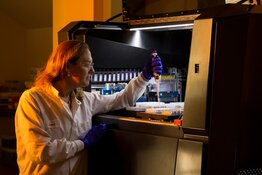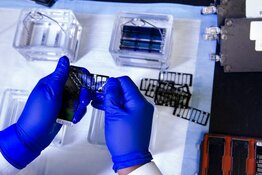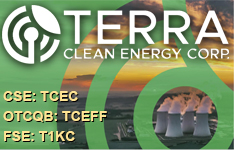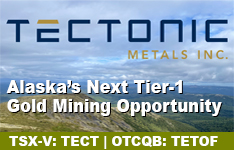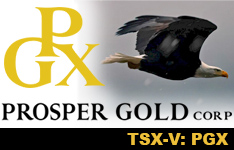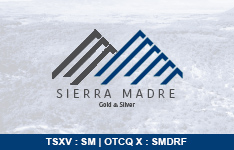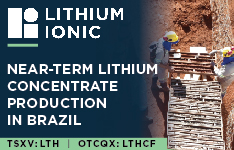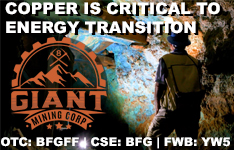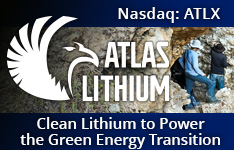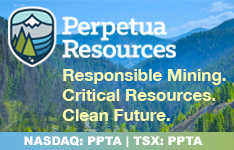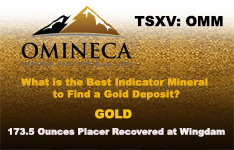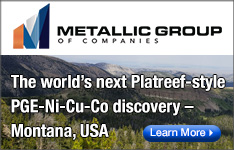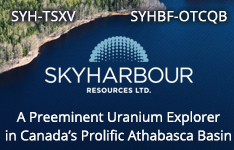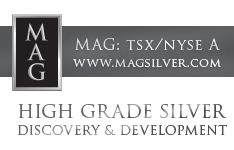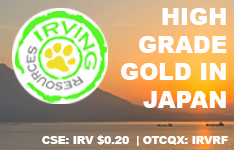Beam Therapeutics Inc. (BEAM:NASDAQ) recently presented additional clinical data on its investigational base editing therapy, BEAM-302, at the 2025 Alpha-1 Foundation 7th Global Research Conference and 10th Patient Congress in Lisbon, Portugal. The presentation included new findings from Part A of its ongoing Phase 1/2 trial in patients with alpha-1 antitrypsin deficiency (AATD), a genetic disorder that can lead to severe lung and liver disease.
Data from the 60 mg dose cohort (n=3) demonstrated a mean of 91% corrected M-AAT protein - an alpha-1 antitrypsin variant considered functional - in circulation by Day 28 post-treatment. This level exceeds that typically observed in MZ genotype carriers (~80%). In parallel, a mean 79% reduction in the mutant Z-AAT protein, associated with liver pathology, was observed in the same cohort. According to Amy Simon, M.D., Chief Medical Officer at Beam, "The totality of the data shared to date highlight the promising impact of our approach across multiple drivers of disease pathology."
BEAM-302 employs base editing, a precision gene-editing method that enables targeted changes without causing double-strand breaks in DNA. In this case, it is designed to correct the E342K mutation in the SERPINA1 gene responsible for AATD. Results from nine patients across three dosing cohorts (15 mg, 30 mg, and 60 mg) confirmed a dose-responsive increase in total circulating AAT, with the 60 mg dose raising average levels to 12.4µM, above the clinically accepted protective threshold of 11µM. These increases in AAT were also functional, as shown by neutrophil elastase inhibition assays.
Safety outcomes were favorable according to the news release. All treatment-emergent adverse events were classified as mild to moderate, with no dose-limiting toxicities or serious adverse events reported. Mild infusion-related reactions and transient liver enzyme elevations were noted but resolved without intervention.
BEAM-302 is being developed as a potential one-time treatment for both lung and liver manifestations of AATD. Beam has initiated a fourth cohort evaluating a 75 mg dose and plans to begin dosing patients with liver disease in Part B of the trial in the second half of 2025. The investigational new drug (IND) application for BEAM-302 has been cleared by the U.S. Food and Drug Administration, enabling U.S. site activation for the ongoing trial.
Innovation Continues Amid Headwinds in the Biotechnology Market
The biotechnology sector continued to evolve through early 2025, marked by both innovation and regulatory uncertainty. Franklin Templeton wrote on February 18 that while biotechnology had significantly underperformed broader markets over the past five years, the sector still offered "abundant opportunities for investors" due to its focus on solving diseases with few or no treatment options.
The firm pointed to persistent macroeconomic headwinds — including high interest rates and industry consolidation — but stated, "We see a lot of fundamentally compelling stocks at attractive valuations after the recent drawdown." Franklin Templeton also noted that an uptick in merger-and-acquisition activity, such as Johnson & Johnson's proposed acquisition of Intra-Cellular Therapies, could support renewed investor interest in the space.
On April 7, H.C. Wainwright reiterated its Buy rating and US$80 price target for Beam.
The report identified strong government support, streamlined regulatory frameworks, and favorable reimbursement policies as key drivers of market expansion. It also noted that the growing prevalence of personalized medicine and orphan drug development had opened "new avenues for biotechnology applications" and encouraged the rise of emerging biotech firms.
Advances in DNA sequencing, nanobiotechnology, and regenerative medicine, combined with increased demand for novel treatments for chronic conditions such as cancer and neurodegenerative diseases, were seen as supporting continued sector growth.
In addition, the report cited a "high level of merger and acquisition activity" as a defining characteristic of the market, highlighting recent deals such as Amgen's acquisition of Horizon Therapeutics in 2023.
The study further emphasized the diverse applications fueling the sector's growth, including agricultural biotechnology, fermentation technologies, and cellular engineering. The health-related segment held the largest market share in 2023, supported by innovations in biologics, gene therapy, and AI-driven bioinformatics. In the U.S., biotechnology adoption was linked to high healthcare spending, a mature life sciences infrastructure, and demand for personalized therapeutics.
On April 8, Wedbush analyst Dr. David Nierengarten reaffirmed an Outperform rating on Beam Therapeutics Inc.
According to an April 7 report from Maximize Market Research, the global biotechnology market was valued at US$828.77 billion in 2024 and is projected to grow to approximately US$2.18 trillion by 2032, reflecting a compound annual growth rate of 12.86%.
The report attributed this growth to demand for personalized medicine, advances in gene and cell therapies, and increased R&D spending.
"Companies are investing heavily in R&D to develop advanced biotechnological solutions . . . aiming to address a wide range of diseases with improved efficacy and safety profiles," the firm wrote. The United States remained a key contributor to this trend, supported by strong research institutions and innovation in areas like genomics and biopharmaceuticals.
Positive Analyst Coverage Supports Beam's Pipeline Strategy
On April 7, H.C. Wainwright reiterated its Buy rating and US$80 price target for Beam, citing updated data from the BEAM-302 trial in patients with alpha-1 antitrypsin deficiency (AATD). Analyst Patrick Trucchio wrote that the trial "marked the first clinical demonstration of durable, dose-dependent correction of the PiZ mutation." He highlighted that a single 60 mg dose of BEAM-302 led to corrected M-AAT protein comprising 91% of total AAT in circulation and a 79% reduction in the mutant Z-AAT protein by Day 28.
Trucchio added, "These effects were not only rapid—observed as early as Day 7 — but were also sustained, with durability demonstrated out to 6 months in earlier cohorts." He referred to BEAM-302 as "underappreciated" and described it as potentially "the first curative treatment for AATD." Trucchio estimated a 30% probability of success for the program and assigned it a risk-adjusted value of US$15 per share within Beam's US$80 valuation.
On April 8, Wedbush analyst Dr. David Nierengarten reaffirmed an Outperform rating on Beam Therapeutics Inc. and maintained a target price of US$57 per share. This target reflected a 273% return potential based on the stock's price of approximately US$15.27 at the time of the report.
According to Nierengarten, Beam's updated biomarker data from the 60 mg cohort of BEAM-302 showed a "high proportion of corrected M-AAT (mean 91%) at 28 days" and a 79% mean reduction in the disease-causing Z-AAT protein. He noted that these levels exceeded thresholds not yet achieved by other gene therapies and stated, "We continue to regard 11 microns of serum AAT, already achieved at the 60 mg dose of BEAM-302… as the threshold necessary for regulatory approval."
Nierengarten also emphasized Beam's broad pipeline of base editing programs, citing multiple near-term catalysts across its liver and hematology franchises. He wrote that Beam's development path included the launch of a Phase 1/2 trial for BEAM-301 in glycogen storage disease type 1a and updated results for BEAM-101 in sickle cell disease by midyear.
Additional updates for BEAM-302 in alpha-1 antitrypsin deficiency and the start of a liver disease cohort were expected later in 2025. Nierengarten concluded, "We see recent price action as a buying opportunity," and pointed to Beam's "clear pathway toward commercial entry in sickle cell disease and continuing room for differentiation in AATD" as drivers of expected share price movement in the near term.
Strategic Expansion of Base Editing Programs
According to Beam's March 2025 investor presentation, BEAM-302 is one of several candidates advancing through a diversified pipeline aimed at developing curative therapies for genetic diseases through base editing. The BEAM-302 program targets the correction of the E342K mutation in AATD and is part of the company's liver disease franchise. Beam is positioning BEAM-302 as a differentiated, potentially one-time treatment capable of addressing both lung and liver complications under normal physiological regulation.
The Phase 1/2 trial is designed to provide early safety and efficacy data across dose cohorts. Having completed dosing in the first three cohorts, Beam initiated the fourth (75 mg) and plans to begin dosing patients with liver disease in Part B of the trial later in 2025. Updated data from the ongoing trial are expected to be presented at a medical conference in the second half of 2025.
Beam's base editing platform integrates its own good manufacturing practice (GMP) facility in North Carolina, which has produced over 100 GMP batches. This internal capability supports its liver-targeted in vivo delivery platform using lipid nanoparticles (LNPs), which are designed to enable repeatable and scalable outpatient dosing.
As of December 31, 2024, Beam reported US$850.7 million in cash, cash equivalents, and marketable securities. Combined with proceeds from a US$500 million financing announced on March 10, 2025, the company anticipates its cash runway will extend into 2028.
The company's base editing technology is also being applied to additional programs, including BEAM-301 for glycogen storage disease type 1a and BEAM-101 for sickle cell disease. With multiple potential catalysts expected throughout 2025, Beam continues to focus on executing across clinical programs to advance its therapeutic pipeline.
Ownership and Share Structure
According to Refinitiv, 1.30% of Beam Therapeutics is owned by management and insiders, and 0.02% is held by strategic entities.
79.05% is held by Institutions. Of them, Fallon Capital Management has 8.26%, The Vanguard Group holds 7.62%, ARK Investment Management owns 7.08%, BlackRock Institutional Trust Company has 5.93%, and ARCH Venture Partners has 4.55%. The rest is retail.
BEAM has 98.46 million free float shares, a market cap of US$1,526.71 million, and a 52-week range of US$13.53 - US$35.25
| Want to be the first to know about interesting Biotechnology / Pharmaceuticals investment ideas? Sign up to receive the FREE Streetwise Reports' newsletter. | Subscribe |
Important Disclosures:
1) James Guttman wrote this article for Streetwise Reports LLC and provides services to Streetwise Reports as an employee.
2) This article does not constitute investment advice and is not a solicitation for any investment. Streetwise Reports does not render general or specific investment advice and the information on Streetwise Reports should not be considered a recommendation to buy or sell any security. Each reader is encouraged to consult with his or her personal financial adviser and perform their own comprehensive investment research. By opening this page, each reader accepts and agrees to Streetwise Reports' terms of use and full legal disclaimer. Streetwise Reports does not endorse or recommend the business, products, services or securities of any company.
3) This article does not constitute medical advice. Officers, employees and contributors to Streetwise Reports are not licensed medical professionals. Readers should always contact their healthcare professionals for medical advice.
For additional disclosures, please click here.



